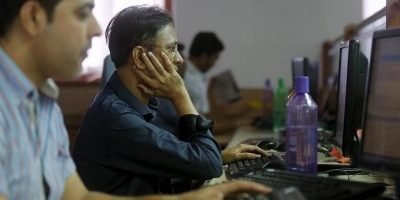
In a world of Covid travel bans, the Asia Infrastructure Investment Bank has found an unusual way of keeping tabs on major development projects in places like India and Turkey that staff can’t visit: tracking progress from space.
Since early 2020, when the pandemic prevented AIIB staff from traveling, the Beijing-based bank has used satellite photographs to monitor progress of about 40 projects across the globe. Some can be tracked almost daily, replacing many of the on-site inspections that were common for international lenders prior to Covid-19, the AIIB said in a written response to questions from Bloomberg.
While banks and trading houses have used satellite imagery for years to track everything from oil stockpiles to construction sites, analytics companies developing more sophisticated algorithms are extracting data that can capture detailed information from the health of soil to emissions from industrial sites.
The World Bank has been a pioneer of using satellite imagery, both for its own development projects and to help countries, especially developing nations who often don’t have access to this technology. However, unlike the World Bank with its dedicated “Geospatial Operations Support Team,” the AIIB, which was only founded in 2016, lacks those skills in-house, opting instead to give non-experts at the bank the chance to use the technology and make it a part of their work.
Spearheaded by China, the AIIB is a multilateral development bank with more than 100 member nations, including India, Australia, and many European nations. The more established Asian Development Bank, led by Japan and headquartered in Manila, also provides funding to countries in the region.
Rapidly falling costs allowed the AIIB to give access to the satellite technology to more of its staff, enabling them to experiment on the best ways to use the new data. Employees involved in investments at the AIIB use public data sets, like observations from the Sentinel-2 satellites, as well as commercial imagery.
The photographs can be used to track a project from the moment it’s proposed, including helping study environmental and social implications, to its construction to ensure it’s done correctly. After completion, the project can be measured for the possible benefits and problems it brings the local community.
Previously, all that work would have required expensive site visits since the AIIB, unlike the World Bank or other development organizations, doesn’t have regional offices around the world. It also allows the bank to compare results of a project over time, possibly prior to the investment even being proposed.
The new approach “allows us to verify and date changes on the ground at a fraction of the cost of flying to the site,” the bank said in a written statement, while also significantly reducing carbon dioxide emissions from international travel.
“We’ve used satellite images across our diverse portfolio, spanning ports, railways, roads, airports, wind and solar parks, electricity transmission and distribution lines,” the bank said. Even when bank staff travel again “remote assessment would allow us to better prioritize field visits. It also provides dated proofs in cases of disagreements over facts on the ground.”
[“source=gsmarena”]

